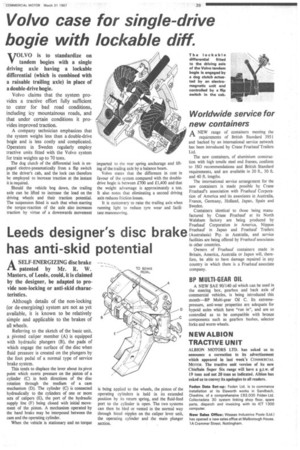Volvo case for single-drive bogie with lockable duff
Page 41

If you've noticed an error in this article please click here to report it so we can fix it.
VOLVO is to standardize on tandem bogies with a single driving axle having a lockable differential (which is combined with a raisable trailing axle) in place of a double-drive bogie.
Volvo claims that the system provides a tractive effort fully sufficient to cater for bad road conditions, including icy mountainous roads, and that under certain conditions it provides improved traction.
A company technician emphasizes that the system weighs less than a double-drive bogie and is less costly and complicated. Operators in Sweden regularly employ tractive units fitted with the Volvo system for train weights up to 70 tons.
The dog clutch of the differential lock is engaged electro-pneumatically from a flip switch in the driver's cab, and the lock can therefore be employed to increase traction at the instant it is required.
Should the vehicle bog down, the trailing axle can be lifted to increase the load on the driving wheels and their traction potential. The suspension fitted is such that when starting the torque-reaction of the axle also increases traction by virtue of a downwards movement
imparted to the rear spring anchorage and lifting of the trailing axle by a balance beam.
Volvo states that the difference in cost in favour of the system compared with the doubledrive bogie is between 000 and £1,400 and that the weight advantage is approximately a ton. It also notes that eliminating a second driving axle reduces friction losses.
It is customary to raise the trailing axle when running light to reduce tyre wear and facilitate manoeuvring.
















































































































